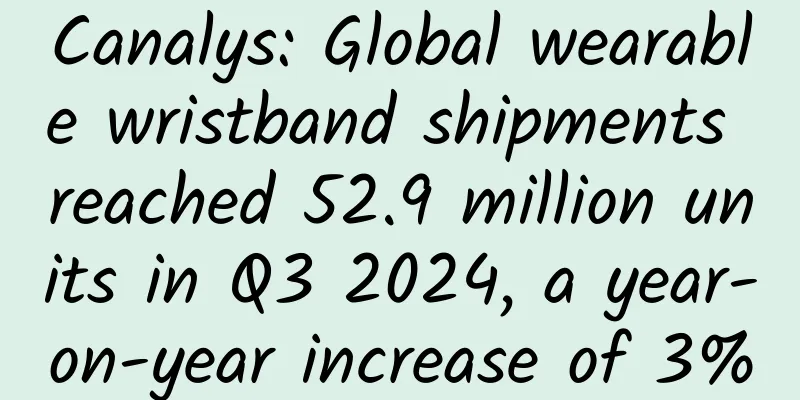Canalys: Global wearable wristband shipments reached 52.9 million units in Q3 2024, a year-on-year increase of 3%

|
The global wearable band market grew 3% year-on-year to 52.9 million units in the third quarter of 2024, according to the latest research from Canalys. Shipments of all three device categories - basic wristbands, basic watches and smartwatches - are growing year-on-year. The basic band market returned to growth for the first time since the third quarter of 2020, thanks largely to the recent launches of the Xiaomi Mi Band 9 and Samsung Galaxy Fit3, growing 7% compared to the third quarter of 2023 with shipments of 10.4 million units. The basic watch market has begun to level off, growing 3% year-on-year to 23.9 million units, due to slowing demand in India. Smartwatch shipments grew just 0.1% to 18.5 million units, as growth from Huawei and Samsung offset Apple's decline. Redmi achieved its highest wearable wristband shipments since the fourth quarter of 2020, driven by strong demand for the Mi Band 9 and Redmi Watch 5 series. Xiaomi has expanded these product lineups to appeal to a wider customer base, including offering multiple options such as Pro, NFC and Active versions of the wristbands, as well as Lite and Active versions of the Redmi Watch 5 series in a variety of colors and materials. "These diverse product offerings allow Xiaomi to target multiple price segments, helping it gain greater market share," said Jack Leathem, research analyst at Canalys. "The emphasis on entry-level products led to a 9% year-on-year decline in its average selling price, reaching its lowest level since the first quarter of 2021. At the same time, Xiaomi's efforts to move upmarket have also made progress, with shipments of the Watch S series increasing 70% year-on-year. Balancing its reliance on affordable devices with the desire to build a premium brand remains a major challenge." “Regional differences shaped the wearables market, with emerging markets showing strong growth potential while North America struggled,” said Cynthia Chen, research manager at Canalys. “Emerging markets offer vendors opportunities to expand through low-cost devices, with Xiaomi’s Band series and Samsung’s Galaxy Fit3 having success in driving growth in Latin America and EMEA. Conversely, North America faced declining demand due to reduced demand for Apple’s legacy models and Fitbit’s shrinking share, as mature markets lacked compelling features to drive upgrades, leading to continued sluggish performance.” |
<<: iPhone 15 series ranks top three in sales in Q3 2024 global mobile phone market
Recommend
What are the benefits of eating durian for women
I believe that when people mention durian, their ...
Is a comminuted pelvic fracture serious?
For women, the pelvis can be said to be an import...
Aspirin increases the risk of heart failure!? ESC Heart Failure Journal Analysis of 30,000 People
In recent years, the use of aspirin for primary p...
Can I eat pumpkin porridge during confinement?
In fact, many people feel confused during the con...
What are the precautions and dietary precautions during menstruation?
As we all know, women need to be careful not to h...
How long can dried chrysanthemum be preserved? What are the benefits of chrysanthemum brain?
Chrysanthemum tea is popular among most people in...
Why do women lose their hair?
I believe that every female friend has encountere...
What tests are needed to prepare for pregnancy
Many newlyweds start preparing right after they g...
Pictures of cesarean section vertical incision 2 years ago
Most people know that there are two types of abdo...
What should women do if they have iron deficiency anemia?
According to surveys conducted by relevant depart...
Can I eat pineapple when I'm pregnant?
Pineapple is a fruit that many people like. It co...
Popular Science Stamp Collecting | Robert Koch and the Discovery of Tuberculosis
Tuberculosis was a very terrible disease in the p...
Heavy menstrual flow and large blood clots
Some people have heavy menstrual flow, which is f...
CounterPoint: Global smartwatch market shipments to drop 7% year-on-year in 2024
According to the latest report from CounterPoint R...
[Medical Q&A] Is pulmonary edema really serious?
Planner: Chinese Medical Association Reviewer: Zh...









